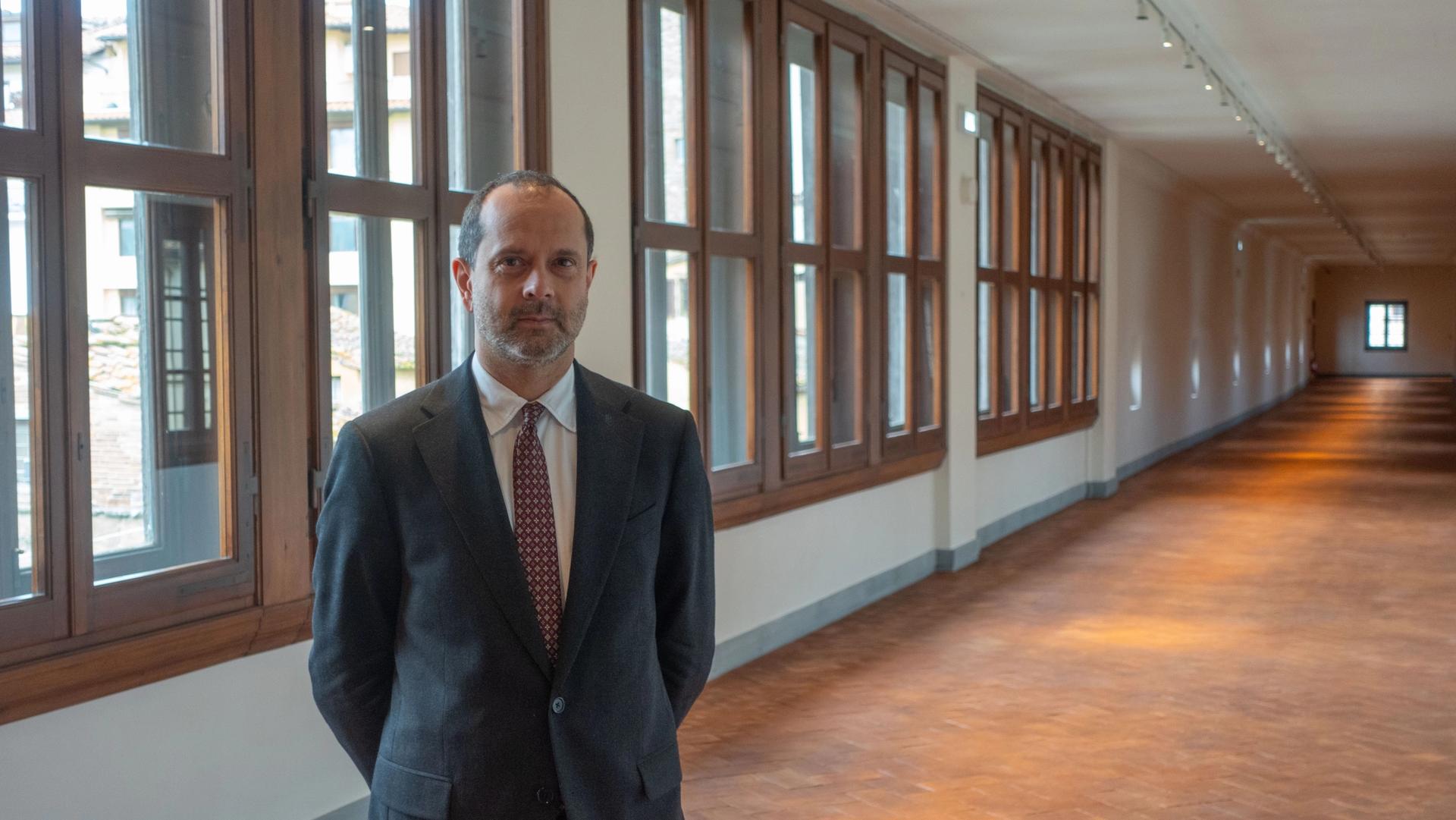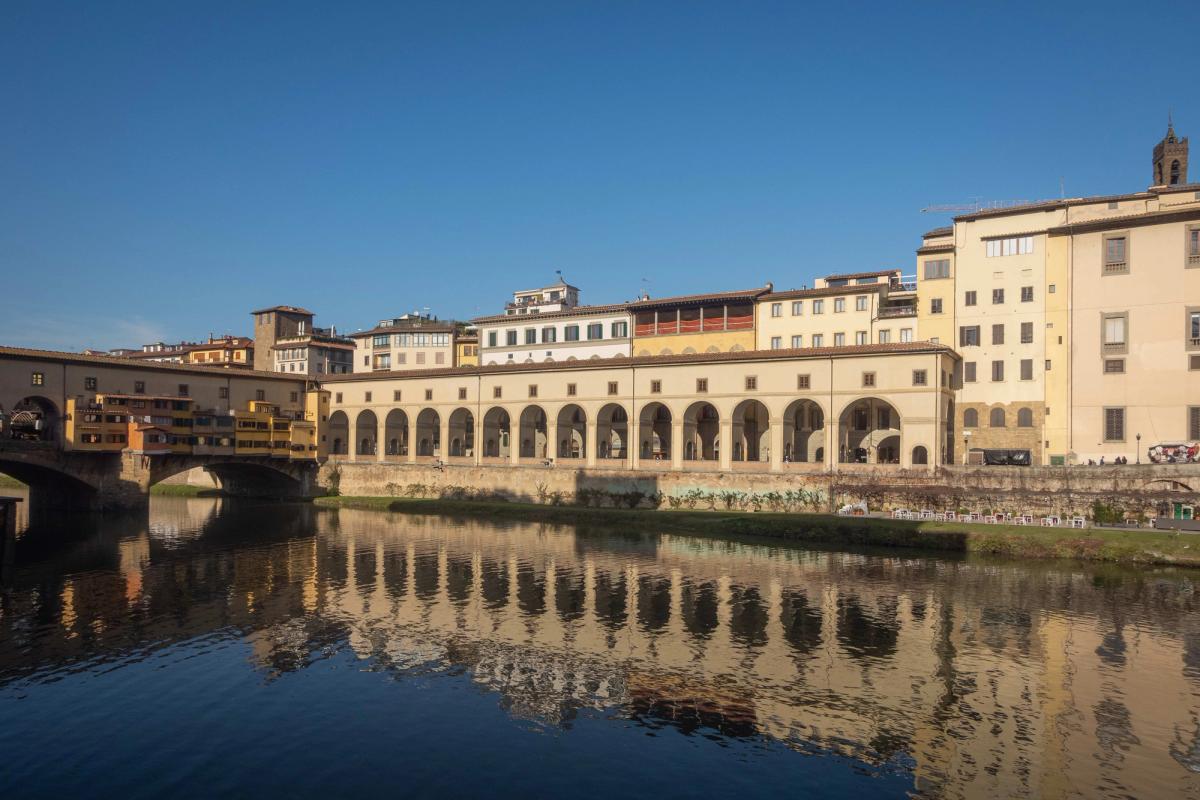The Vasari Corridor (Corridoio Vasariano)—the secret passageway over the Arno River in Florence that connects the Uffizi Galleries to the Pitti Palace—has reopened following an eight-year, €11m redevelopment and refurbishment.
The 1km-elevated passageway was built by the architect Giorgio Vasari for Cosimo I de’ Medici, the second Duke of Florence, in 1565. “The Medici family used it to reach Palazzo Vecchio from Pitti Palace undisturbed and without running risks to their safety,” says a museum statement. From 1973, the Uffizi displayed self-portraits by artists including Rembrandt and De Chirico in the corridor, before closing the structure in 2016 due to safety concerns.
There are crowd management challenges in the Vasari Corridor. Because of its location, high above the river, it cannot have fire exits every 30m as required by health and safety though five new exits have been added. The fire brigade will also only allow 25 visitors in every 15 minutes. “So whatever we display there will have to be of the highest quality,” Simone Verde, the Uffizi director, told The Art Newspaper. Currently the walls of the corridor are bare.
Verde told The Guardian: “It was a corridor of continuous passage between the Pitti Palace and the Uffizi for essentially five centuries. But the idea is not just to open the corridor, which in itself has an importance, but also to show to the public the connection between the various souls of this monumental complex and its collections.”
Funding was provided by the Italian state, which gave €10m, while the US businessman Skip Avansino donated $1m. Tickets cost €43 for entry to the gallery and the corridor which allow visitors to spend up to two hours in the galleries.
“Once visitors have started to walk down the corridor, they are unable to return to the Uffizi; the corridor is a one-way system only, leading from the Uffizi to the Pitti Palace,” says the gallery website. Alternatively, visitors can pay €20 as an add-on to purchased Uffizi tickets. Visitors exit through the Boboli Gardens.
On 27 May 1993, explosive packs hidden in Via dei Georgofili detonated, killing five people, including a baby and a nine-year-old child. Around a quarter of the paintings in the Vasari Corridor were damaged, with Gerard van Honthorst’s Adoration of the Shepherds (1620) among those most badly burned. On a visit to Florence in 1938, Benito Mussolini accompanied Adolf Hitler along the Vasari Corridor before an official visit to the Uffizi.

Simone Verde, Uffizi Galleries director, in the Vasari Corridor
courtesy Uffizi Galleries


